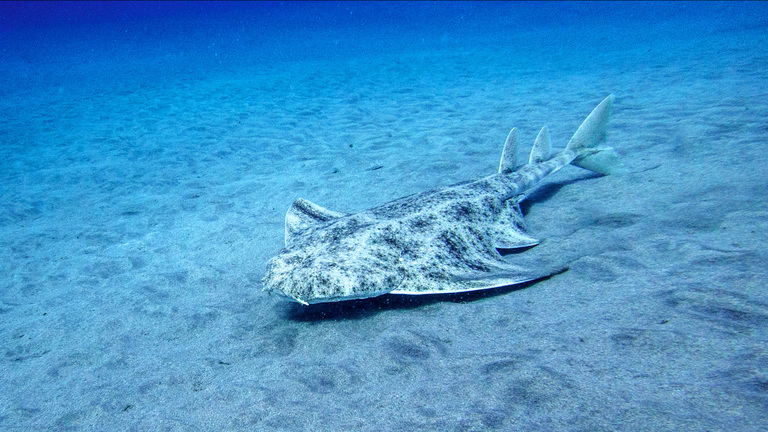Much of US shark meat comes from endangered species, study finds – The Guardian

Report on Mislabeled Shark Meat in the U.S. Market and its Conflict with Sustainable Development Goals
Executive Summary
A recent study conducted by the University of North Carolina at Chapel Hill has revealed systemic mislabeling of shark meat products sold to American consumers. The findings demonstrate that 93% of tested products were either inaccurately labeled or described too vaguely for species identification. This practice directly undermines several United Nations Sustainable Development Goals (SDGs), particularly SDG 14 (Life Below Water) by promoting the trade of endangered species, SDG 12 (Responsible Consumption and Production) by obscuring supply chain transparency, and SDG 3 (Good Health and Well-being) by exposing consumers to health risks.
Research Methodology and Key Findings
The research, led by marine ecologist Savannah Ryburn and published in Frontiers in Marine Science, aimed to identify the species of shark meat available in the U.S. market.
- Methodology: DNA barcoding was used to analyze the species identity of 29 shark meat products.
- Sample Sources: Products were purchased from a range of vendors, including grocery stores, seafood markets, and online retailers across the United States.
The analysis yielded the following critical findings:
- An overwhelming 93% of the samples (27 out of 29) were mislabeled or marketed with ambiguous terms like “shark,” preventing consumers from making informed choices.
- Meat from 11 distinct shark species was identified, including species classified as critically endangered by the International Union for Conservation of Nature (IUCN).
- Critically endangered species, such as the great hammerhead and scalloped hammerhead, were found for sale, despite their protected status.
- Only one product out of the 29 tested carried a completely accurate, species-specific label.
Implications for Sustainable Development Goals (SDGs)
The study’s findings highlight a significant disconnect between current market practices and the global commitment to sustainability as outlined in the SDGs.
SDG 14: Life Below Water
This goal aims to conserve and sustainably use the oceans, seas, and marine resources. The trade in mislabeled shark meat directly contravenes this objective.
- Threat to Marine Biodiversity: The sale of critically endangered hammerhead sharks undermines Target 14.2 (sustainably manage and protect marine and coastal ecosystems) and Target 14.4 (end overfishing and destructive fishing practices). The global shark population has already declined by over 70% since 1970, and this unregulated trade exacerbates the threat.
- Illegal and Unregulated Fishing: Vague labeling can serve to mask the origins of seafood, potentially laundering products from illegal, unreported, and unregulated (IUU) fishing operations into the legitimate market.
SDG 12: Responsible Consumption and Production
This goal focuses on ensuring sustainable consumption and production patterns. The lack of accurate product information is a fundamental failure in this area.
- Consumer Information: The practice of mislabeling removes the consumer’s ability to make responsible purchasing decisions, directly conflicting with Target 12.8, which seeks to ensure that people everywhere have the relevant information and awareness for sustainable development.
- Supply Chain Transparency: The findings expose a severe lack of transparency and accountability within the seafood supply chain, hindering any progress toward sustainable production systems.
SDG 3: Good Health and Well-being
This goal aims to ensure healthy lives and promote well-being for all at all ages. Mislabeled seafood poses a direct risk to public health.
- Health Risks from Contaminants: Shark meat is known to contain high concentrations of mercury, a neurotoxin particularly dangerous for children and pregnant women.
- Informed Health Choices: Without accurate labeling, consumers cannot avoid products with high contaminant levels, such as those from scalloped and great hammerhead sharks, thereby unknowingly exposing themselves to health hazards.
Analysis of the Article in Relation to Sustainable Development Goals
1. Which SDGs are addressed or connected to the issues highlighted in the article?
-
SDG 14: Life Below Water
- The article’s central theme is the threat to marine biodiversity, specifically shark populations. It highlights the “dramatic decline of shark populations globally” by over 70% and the sale of “critically endangered” species like the great hammerhead. This directly connects to the goal of conserving and sustainably using marine resources.
-
SDG 12: Responsible Consumption and Production
- The issue of seafood mislabeling is a core aspect of this goal. The article states that “93% of the samples were either falsely labeled or so vaguely described,” which “remove[s] consumers’ ability to choose.” This points to a failure in providing consumers with the necessary information to make responsible and sustainable purchasing decisions.
-
SDG 3: Good Health and Well-being
- The article explicitly raises health concerns, noting that “shark meat contains high levels of mercury” and that some species are “strongly advised against consumption due to their very high contaminant levels.” The mislabeling prevents consumers, including vulnerable groups like “children and pregnant women,” from avoiding these health risks.
2. What specific targets under those SDGs can be identified based on the article’s content?
-
Target 14.4: End overfishing and restore fish stocks
- This target aims to “effectively regulate harvesting and end overfishing, illegal, unreported and unregulated fishing.” The article directly addresses the failure to meet this target by stating that shark populations have declined by “over 70% since 1970” due to overfishing driven by an “increasing demand for shark meat.” The sale of critically endangered species is a clear sign of unregulated and unsustainable harvesting.
-
Target 12.8: Promote universal understanding of sustainable lifestyles
- This target focuses on ensuring that “people everywhere have the relevant information and awareness for sustainable development.” The article demonstrates a clear gap here, as misleading labels prevent consumers from making informed choices. The quote, “Without accurate and precise labeling, consumers cannot avoid purchasing these products,” directly illustrates how a lack of information hinders sustainable consumption.
-
Target 3.9: Substantially reduce illnesses and deaths from hazardous chemicals and pollution
- This target aims to reduce illnesses from contamination. The article connects to this by highlighting the health risks of consuming mislabeled shark meat, which “contains high levels of mercury.” It points out that consumers are unknowingly exposed to these “very high contaminant levels,” which has direct implications for human health.
3. Are there any indicators mentioned or implied in the article that can be used to measure progress towards the identified targets?
- Indicator for Target 14.4: The article provides a clear, quantifiable indicator of the state of shark populations: a decline of “over 70% since 1970.” This figure serves as a direct measure of the failure to maintain fish stocks at biologically sustainable levels.
- Indicator for Target 12.8: The study’s primary finding acts as a powerful indicator: “93% of the samples were either falsely labeled or so vaguely described.” This percentage measures the prevalence of seafood mislabeling in the market, indicating the extent to which consumers lack accurate information for sustainable choices.
- Indicator for Target 3.9: While not providing specific measurements (e.g., parts per million), the article implies an indicator through the identification of “high levels of mercury” and “very high contaminant levels” in tested food products. The use of “DNA barcoding” is also mentioned as the scientific method used to identify the species, which is a crucial step in assessing associated contaminant risks.
4. Summary Table of SDGs, Targets, and Indicators
| SDGs | Targets | Indicators |
|---|---|---|
| SDG 14: Life Below Water | 14.4: By 2020, effectively regulate harvesting and end overfishing, illegal, unreported and unregulated fishing and destructive fishing practices. | The decline of shark populations by over 70% since 1970 due to overfishing. |
| SDG 12: Responsible Consumption and Production | 12.8: By 2030, ensure that people everywhere have the relevant information and awareness for sustainable development and lifestyles in harmony with nature. | The finding that 93% of tested shark meat products were mislabeled or vaguely described, preventing informed consumer choice. |
| SDG 3: Good Health and Well-being | 3.9: By 2030, substantially reduce the number of deaths and illnesses from hazardous chemicals and…contamination. | The presence of “high levels of mercury” and “very high contaminant levels” in shark meat sold to consumers. |
Source: theguardian.com

What is Your Reaction?
 Like
0
Like
0
 Dislike
0
Dislike
0
 Love
0
Love
0
 Funny
0
Funny
0
 Angry
0
Angry
0
 Sad
0
Sad
0
 Wow
0
Wow
0



















































.jpg.webp?itok=0ZsAnae9#)

























